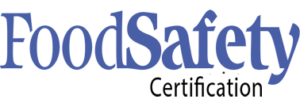Each year there are millions of Canadians who get infected by foodborne illness. Foodborne illness or FBI is acquired when a person ingests a pathogenic microorganism, like a virus or bacteria. But how do these microorganisms become ingested? Viruses and bacteria typically infect humans who eat contaminated food; food becomes contaminated when the food handler or even the consumer doesn’t prepare or handle the food safely. Poorly sanitized utensils and inadequate cooking time can cause microorganisms to thrive on food products. Mississauga First Aid provides you the all details about the foodborne illness.
Mandatory food handler training
The city of Mississauga is part of the Ontario province, meaning it has to abide by the laws set by the Ontario Ministry of Health and Long Term Care. The ministry drafted a by-law (that has been amended twice, once in 2008 and once in 2010) on mandatory food handler training. According to the by-law, all medium and high-risk food establishments must have a certified food handler on duty during every shift.
A food establishment is considered high-risk when:
- It serves food to vulnerable members of the population, e.g. children and older adults
- It handles large amounts of food or food usually associated with foodborne illness, e.g. catering or dining halls
- It has been associated with a case of foodborne illness previously
- The food handling process is quite extensive, e.g. manufacturing establishments
On the other hand, a food establishment is considered medium-risk when:
- It handles hazardous food not considered high-risk.
- The product is exposed to a large number of patrons and food handlers, e.g. restaurants
Mississauga First Aid training
Mississauga First Aid offers first aid and food safety courses to prospective trainees. Food safety is by far one of our most popular classes available; with food handlers making up most of our students (because of the by-law). You can choose between two levels, though the first, basics level, is a prerequisite for the second, advanced level.
Food safety level one is a basic course covering topics in microbiology, foodborne illness, and sanitation – topics that direct food handlers should know and be able to practice. The first level of training is short, taking only 8 hours which can be completed in a single day or two days. Anyone can sign up for this program; it is open to anyone with an interest in food safety and foodborne illness.
Food safety level two is an advanced course; students who wish to sign up need to complete and be certified for basic food safety (level one) first. This advanced level is tailored for food handlers in management, such as owners and managers. It runs longer, 16 hours over two days, covering topics such as health permits, staff training, and facility design – the need-to-know when operating a food establishment.
Getting started: Microorganisms in your food
Not all microorganisms are pathogenic – meaning not all bacteria and viruses cause disease. Microorganisms can be found inside our mouths and even on our skin, but they don’t make us sick. In foodborne illness, pathogenic microorganisms like salmonella and the Norovirus thrive on improperly handled food and make the consumer sick.
